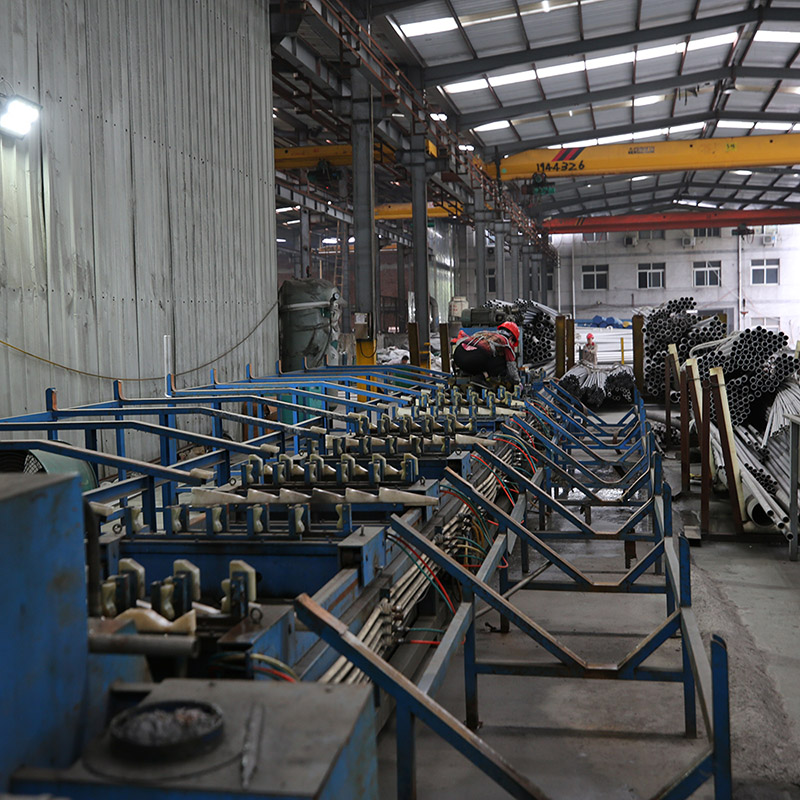close
Choose Your Site
Global
Social Media
In industrial applications, the debate between seamless tube and seamed tube remains a topic of deep interest and scrutiny. Both serve critical roles in mechanical, structural, and hydraulic systems, yet choosing the right one often depends on understanding their specific differences, advantages, and limitations. This article offers a thorough comparison to help professionals make informed decisions when selecting tubing materials.
A seamless tube is a hollow cylindrical product with no weld seam, manufactured through an extrusion or rotary piercing process. The absence of a seam allows for uniform strength across the tube body, making it ideal for high-pressure applications. Seamless tubes are typically used in oil and gas, chemical processing, boiler systems, aerospace, and heavy-duty structural applications.
The main manufacturing methods include:
Hot rolling
Cold drawing
Piercing from a solid billet
Because the tube is created from a single piece of metal, its internal structure is more homogeneous, reducing the chances of failure due to weld defects or stress concentrations.

In contrast, a seamed tube, also known as a welded tube, is manufactured by rolling a flat strip of metal into a cylinder and welding the seam along its length. This method is generally less expensive and more suitable for applications where high pressure or structural integrity is not the primary concern.
There are several types of seamed tubes based on the welding method:
Electric Resistance Welded (ERW)
Laser Welded
Tungsten Inert Gas (TIG) Welded
While seamed tubes can be highly consistent and accurate in dimensions, the weld seam remains a weak point under stress, especially in dynamic or corrosive environments.
To better illustrate the differences between seamless and seamed tubes, the following table compares key aspects:
| Feature | Seamless Tube | Seamed Tube |
|---|---|---|
| Weld Seam | No seam | Contains a welded seam |
| Pressure Resistance | Excellent | Moderate to good |
| Structural Integrity | High (uniform throughout) | May have stress concentration at seam |
| Manufacturing Cost | Higher | Lower |
| Dimensional Accuracy | Slightly less precise | Highly accurate and consistent |
| Application Suitability | High-stress, high-pressure systems | Low-pressure, decorative, or general use |
| Availability in Sizes | Limited (especially in large diameters) | More variety, easily customizable |
| Risk of Defect | Lower (no weld-related defects) | Higher (potential weld flaws) |
This comparison clearly shows that seamless tubes excel in strength and pressure resistance, making them suitable for critical applications, whereas seamed tubes offer cost-effectiveness and ease of production.

When deciding between a seamless and a seamed tube, it's essential to consider the specific requirements of your application. Below are some guiding factors to help with your decision:
You’re operating in high-pressure environments such as hydraulic systems, oil & gas pipelines, or boiler tubes.
The application requires maximum strength and uniform material properties.
You need to eliminate the risk of seam failure under dynamic loads or corrosive conditions.
The application is low-pressure or non-critical, such as automotive exhausts, furniture frames, or handrails.
Budget constraints are a concern and cost-effectiveness is a priority.
Dimensional uniformity and mass production are important, such as in consumer or commercial piping systems.
Ultimately, there’s no one-size-fits-all answer, but understanding the mechanical requirements, environmental conditions, and project budget can guide a more informed and technically sound decision.
Yes. Seamless tubes are generally stronger because they lack a welded seam, which is often the weakest point in a tube.
Yes. Due to complex manufacturing processes and stringent quality controls, seamless tubes typically cost more than seamed tubes.
In some cases. Modern welding techniques have improved the strength of seamed tubes, but for very high-pressure environments, seamless is still preferred.
Common materials include carbon steel, stainless steel, alloy steel, and nickel alloys, depending on the end-use.
Seamed tubes often have better dimensional accuracy because the strip used in their manufacturing is tightly controlled during the rolling and welding process.
In the long run, seamless tubes are likely to remain the preferred choice for demanding applications where reliability and structural integrity are non-negotiable. As industries continue to push boundaries in energy, aerospace, and infrastructure, the need for high-performance tubing grows, and seamless tubes meet that challenge.
However, the continual advancement in welding technology also narrows the gap between the two types, making seamed tubes a viable option for many cost-sensitive and non-critical uses.
Choosing between the two depends not only on technical performance but also on economic feasibility, lifecycle expectations, and environmental conditions. A thorough evaluation is crucial before making the final call.